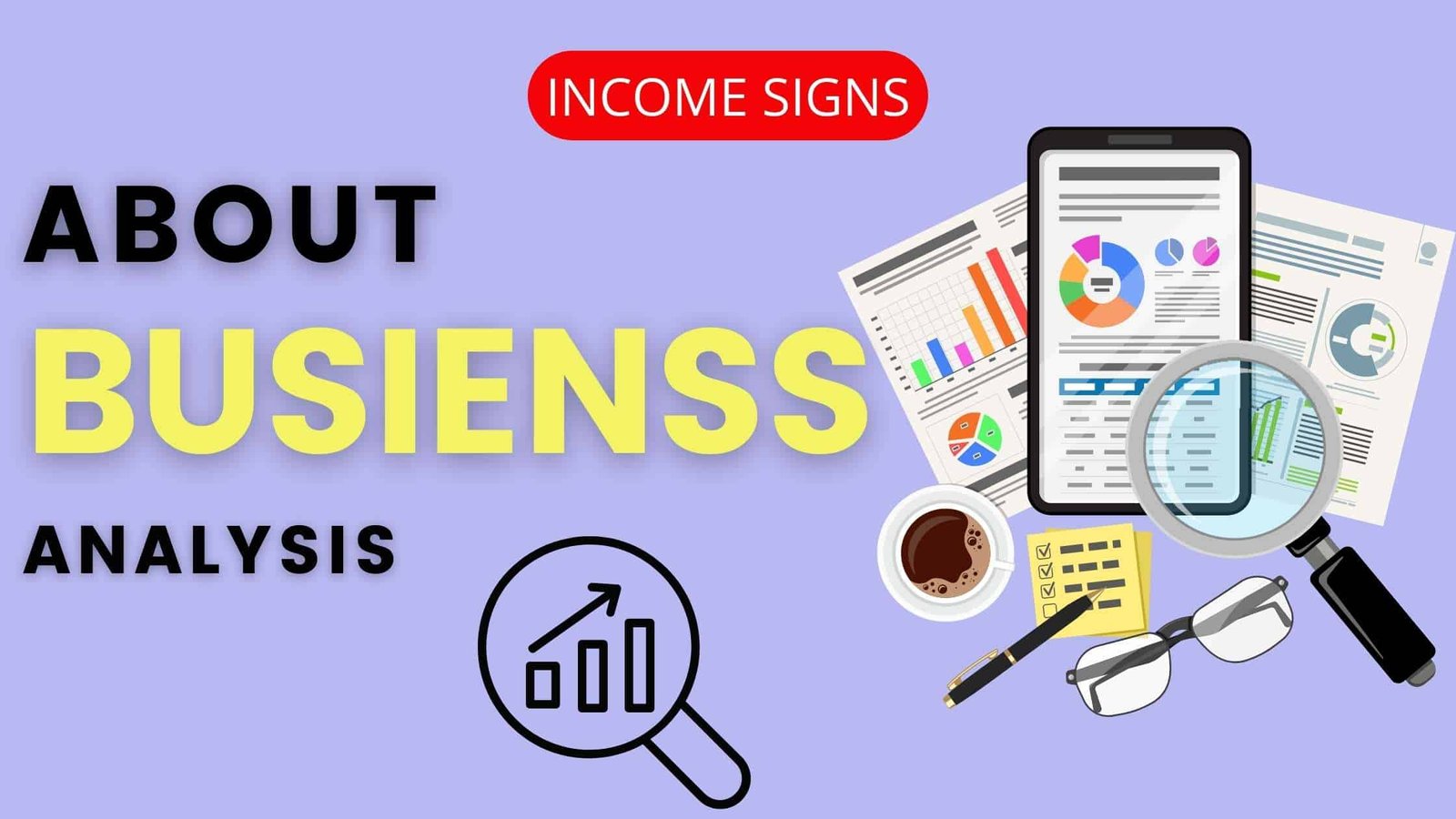If a company plans to make changes or think of improvements to the business, they need to understand what areas need improvement and why.
This is where business analysis comes in. Business analysis is the process of identifying business needs and determining solutions to business problems.
Solutions may include the development of new systems, processes, or procedures.
Business analysis is a strategy employed to bring about change within an organization.
The goal of business analysis is to improve efficiency and effectiveness by understanding an organization’s needs and recommending solutions that will help the organization achieve its objectives.
Business analysis is used to locate and correct inefficiencies, optimize organizational processes and improve overall profitability.
Why is Business Analysis Helpful?
Business analysis is helpful because it helps organizations to improve processes, make better decisions, and achieve their goals.
Knowing the needs of stakeholders and finding the best solution to meet those needs, businesses can save time and money, and avoid costly mistakes.
Business analysis helps organizations to improve communication, manage change, and increase efficiency.
When done correctly, business analysis can be a valuable tool that helps organizations to operate more effectively and efficiently.
Ultimately, by doing all of this analysis, businesses can make more informed decisions about where to focus their efforts, which can lead to increased profits and a stronger competitive edge.
Business Analysis Helps
- To improve communication between business stakeholders.
- Identify the root cause of problems within a business.
- Decision-making within a business.
- The efficiency of business processes.
- Effectiveness of business strategies.
- Financial performance of a business.
Reasons Why to Do a Business Analysis

Improve decision making
The primary goal of business analysis is to improve decision-making.
With the risks involved and the potential solutions, business analysts can help organizations make informed decisions about how to move forward.
Reduce costs
Plotting out the inefficiencies and areas for improvement, businesses can save money on things like labor, materials, and other resources.
Increase revenues
Business analysis helps to reduce costs, is can also help businesses increase revenues.
To know about the needs of customers and identify new markets, businesses can develop products and services that are more likely to be successful.
Improve customer satisfaction
Business analysis can help improve customer satisfaction.
Businesses can develop products and services that are more likely to meet or exceed customer expectations.
Develop better products and services
It helps businesses to develop better products and services.
To assess a company’s strengths and weaknesses, as well as the opportunities and threats in the market, businesses can develop products and services that are more likely to be successful.
Enhance communication
Discussions between different departments and stakeholders, and business analysts can help ensure that everyone is on the same page and that decisions are made in a timely manner.
Improve project success rates
Business analysis can also improve project success rates.
Pointing out risks early on and developing plans to mitigate those risks, businesses can increase the chances that their projects will be successful
Difference Between a Business Analysis and Data Analytics

While business analysis and data analytics may seem similar, there are some key differences between the two.
Business analysis is focused on the needs of the business, while data analytics is focused on the data itself.
Business analysts use data to understand how a business works and identify areas for improvement, while data analysts use data to understand trends and patterns.
Business analysts focus on the present and future of the business, while data analysts focus on the past.
Business analysis is about using data to make better decisions for the business, while data analytics is about using data to understand what has happened in the past.
These are the key differences between business analysis and data analytics.
How to get Started with Business Analysis?

Define the Business Problem
The first step in getting started with business analysis is to define the business problem that you are trying to solve.
This may seem like a simple task, but it is important to take the time to clearly identify the problem so that you can develop an effective solution.
Identify the Stakeholders
Once you have defined the business problem, you need to identify the stakeholders who will be affected by the solution.
Stakeholders can include customers, employees, shareholders, and other interested parties. It is important to identify all of the stakeholders so that you can ensure that their needs are met by the solution.
Develop a Requirements Document
This document should detail what the solution should do in order to solve the problem.
The requirements document should be clear and concise so that it can be used to develop the solution.
Choose a Development Methodology
After developing the requirements document, you need to choose a development methodology.
There are many different development methodologies, but some of the most popular ones include waterfall, agile, and lean. Each methodology has its own strengths and weaknesses, so it is important to choose one that will fit your project needs.
Develop a prototype
The next step is needed to develop a prototype of the solution.
A prototype is a working model of the solution that can be used to test how well it works. Prototypes are often created using software such as PowerPoint or Excel.
Test the prototype
It is important to test it to see how well it works in solving business problems.
Testing can be done through simulations or actual user tests.
It is important to get feedback from users so that you can improve the prototype before developing the final solution.
Develop the final solution
After the prototype has been tested and improved, it is time to develop the final solution.
This solution should be based on the requirements document and the development methodology that was chosen.
The final solution should be tested again to ensure that it meets all of the business needs.
Conclusion
Business analysis is a critical tool for businesses to use in order to improve their operations.
Understanding the needs of the business and developing plans to address those needs, businesses can increase their chances of success.
If you are considering starting a business or improving your current business, then consider using business analysis to help you achieve your goals.
